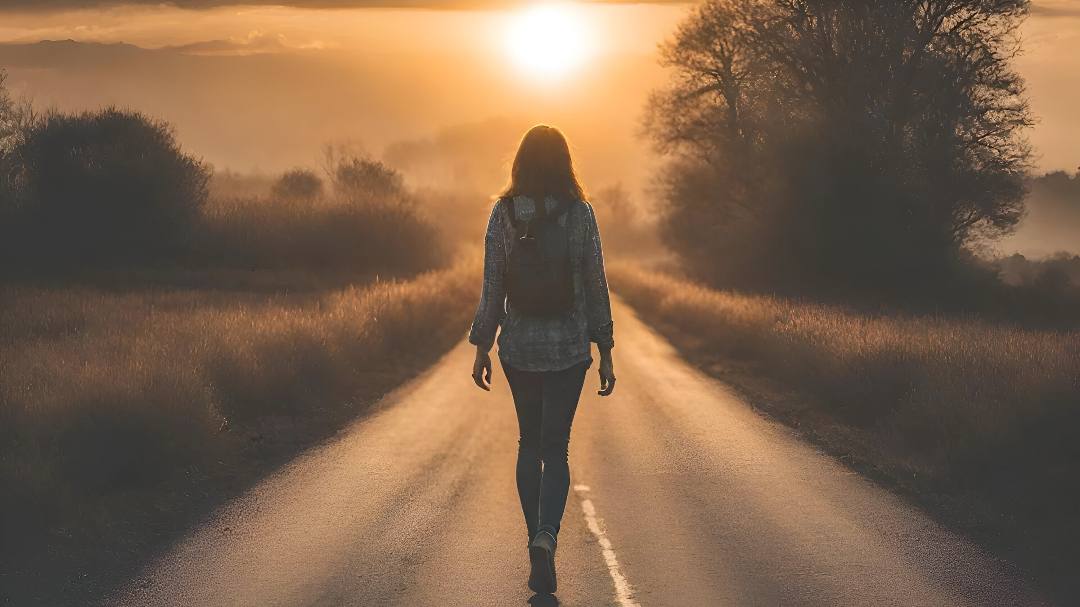Sleep is one of the most crucial pillars of a healthy lifestyle, yet millions of people find it difficult to get enough quality rest each night. In today’s fast-paced world, the natural sleep cycle is frequently disrupted by stress, screen time, and irregular schedules. Fortunately, nature offers one of the most straightforward solutions: daily trail walks. Walking outdoors, especially on trails, improves sleep quality, lowers stress, and enhances overall health.
In this blog, we’ll explore how hiking and walking trails improve sleep, the reasons being outside aligns with your body’s natural rhythms, and practical tips to get started. If you want more guides on fitness and lifestyle, check out YFitnessMatters.
1. Hiking and Better Sleep: What the Science Says
Studies have shown that engaging in regular physical activity, particularly outdoors, improves sleep efficiency and shortens the time it takes to fall asleep. When you combine the gentle cardio of hiking with exposure to natural light, your body’s internal clock—also called the circadian rhythm—becomes more balanced. This is why hiking for better sleep is highly recommended by wellness experts.
Hiking and better sleep are strongly connected because:
- The body feels naturally tired when it is physically exerted.
- The hormone responsible for sleep, melatonin, is regulated in response to natural sunlight.
- Spending time outdoors lowers cortisol, the stress hormone, making it easier to relax at night.
So, while working out at the gym might be beneficial, a trail walk offers the extra benefit of sunlight, fresh air, and nature’s relaxing effect.
2. Walking Trails and Their Role in Sleep Quality
Not all walks are created equal. A slow stroll on the sidewalk is helpful, but walking trails offer additional benefits and are strongly linked with better sleep quality:
- Varied terrain – uneven surfaces increase muscle engagement, burn more energy, and encourage deeper sleep.
- Connection with nature – hearing birds, feeling the breeze, and smelling greenery reduces mental exhaustion.
- Mindful walking – trails naturally encourage you to slow down, pay attention, and unplug from screens.
People who make trail walks part of their daily routine frequently report feeling happier throughout the day and sleeping better at night.
3. Outdoor Activity and the Sleep Cycle
The body thrives on rhythm. Unfortunately, the natural sleep cycle is disrupted by long hours indoors and exposure to artificial light. Outdoor activities such as hiking help reestablish this balance by exposing the body to natural light and darkness at the right times. If you’re interested in restoring your circadian rhythm naturally, hiking is an excellent solution.
Here’s how outdoor activity enhances your sleep cycle:
- Walking in the morning or during the day helps stabilize your circadian rhythm, making you feel alert during the day and drowsy at night.
- Walking on a trail in the evening reduces stress levels and prepares your body for rest.
- Fresh oxygen intake enhances lung function, which leads to deeper, more soothing sleep cycles.
By consistently walking trails, you align your internal clock with nature’s cycles—a natural way to fall asleep faster and wake up feeling rejuvenated.
4. Hiking as a Natural Sleep Remedy
Hiking is a natural sleep remedy that doesn’t come with side effects, yet many people turn to supplements or sleep medications. The quality and duration of sleep are enhanced by regular trail walks.
Benefits include:
- Deeper REM sleep, during which the brain processes emotions and memories.
- Reduced nighttime awakenings, as a result of lowered stress.
- Improved overall restfulness, giving you more energy the next day.
Consider hiking as a natural remedy for insomnia and restless nights, instead of relying on pills.
5. The Role of the “Rest Step” for Hiking Uphill
The rest step for hiking uphill is one method that supports both stamina and recovery during hikes. With this method, you pause briefly with each step, allowing your muscles and breathing to adjust.
Why is this significant for sleep? Because taking rest steps during uphill climbs prevents overexertion, keeping your body in a state of calm exertion instead of stress. By avoiding extreme fatigue or soreness, you maintain consistent energy levels throughout the day and prepare your body for restful nighttime sleep.
6. Practical Tips for Daily Trail Walks
If you want to enhance your sleep through trail walking, consistency matters. For more ideas on how to build this habit, explore fitness and hiking tips.
Follow these simple steps to build the habit:
- Choose local walking trails – Select short routes close to your home or park.
- Aim for 30–45 minutes – This is enough to promote both fitness and better sleep.
- Walk at different times – Morning for energy, evening for relaxation.
- Limit screen time after walking – Allow your body to naturally transition into sleep mode.
- Use the rest step uphill – Preserve energy and lessen joint strain for long-term benefits.
Conclusion
Daily trail walks are more than just a way to keep in shape—they are a natural remedy to improve sleep, lower stress, and boost overall health. By combining physical activity, exposure to nature, and mindful breathing, hiking becomes a comprehensive strategy for enhancing sleep quality.
So next time you find yourself tossing and turning, avoid the sleeping pills. Instead, lace up your shoes, choose a nearby walking trail, and allow nature’s rhythm to guide you into a peaceful night’s sleep.
For more health insights, visit YFitnessMatters.
